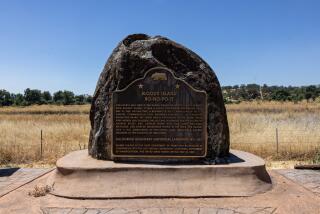Changing Names
- Share via
Camaraderie prevails in Ms. Crane’s writing class composed of non-native English speakers from myriad countries. Korean-born Hyun-Ok confides to her Russian classmate, Irina, that she wishes to change her name to one easier to pronounce. She wants a “more American” name. Eagerly, Irina suggests, “How about Sonya?”
Hyun-Ok is not unique in desiring to alter her name to fit in with mainstream culture. During the 1960s, some Jewish boys in Detroit wished to emulate their Italian hero classmates. Admiringly, Harold became Rock and Merwyn became Dino. Sometimes, fear of discrimination motivates the change. After World War I, outspoken anti-German sentiment caused a branch of the Heine (German) family to change their spelling to Heyne. Earlier in the century when the Saelid family emigrated from Norway, they were advised to change their name to avoid anti-Norwegian, anti-Scandinavian biases. Innocently, they chose “Olson.” Likewise, many Iranian students studying in the U.S. felt the heat during the 1979 American hostage crisis in Iran. To deflect public hostility, Mahmoud became Moe; Amir became Tony; Jafar became Jim and Mehran became David.
Ellis Island provides the setting for many family legends about how American names were bestowed. When non-English-speaking members of a Russian family arrived, the exasperated immigration officer asked, “Does anybody here speak English?” Someone answered, “Esther can,” and the name stuck as “Esterkan.”
The classic Ellis Island legend is about the immigrant, who, when asked for his name, responded in Yiddish, “Ich habn fargessen” (I’ve forgotten) resulting in his new moniker, “Ike Ferguson.”
*
Norine Dresser’s latest book is “Multicultural Celebrations” (Three Rivers Press, 1999). E-mail: norined@earthlink.net.
More to Read
Sign up for our Book Club newsletter
Get the latest news, events and more from the Los Angeles Times Book Club, and help us get L.A. reading and talking.
You may occasionally receive promotional content from the Los Angeles Times.










